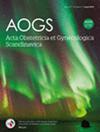Seasonal patterns of preterm birth in the Netherlands: A population-based cohort study
Abstract
Introduction
Preterm birth is subject to seasonal periodicity, dependent on geographical, meteorological, and environmental factors. This study aims to assess whether preterm birth in the Netherlands is subject to seasonal periodicity.
Material and Methods
We performed a population-based cohort including singleton births between January 1, 2010 and December 31, 2019 between 24 + 0 and 42 + 6 weeks of gestation in the Netherlands. The primary outcome was the incidence of preterm birth <37 weeks. Secondary outcomes were total, spontaneous, and iatrogenic preterm birth <28, <32, and <37 weeks of gestation. Preterm birth incidence was calculated per conception month and as a proportion of fetuses-at-risk, taking into account the number of ongoing pregnancies at risk for preterm birth. The incidence of preterm birth <37 weeks per conception month and out of fetuses-at-risk was plotted for the 10-year study period. Incidences were reported as rates, and seasonality was tested with logistic regression and autocorrelation function with a 12-month lag.
Results
In total, 1 598 554 births were included in the 10-year study period. The average monthly birth count varied from 12 006 (February) to 14 293 (September). The average monthly preterm birth count varied from 610 (February) to 728 (July). Over the total study period, the incidence of preterm birth <37 weeks was 5.16%. Pregnancies conceived in April and May had the highest incidences of preterm birth <37 weeks (5.58% and 5.38%, respectively). Out of fetuses-at-risk, preterm birth incidences were highest in October, December, and January (between 1.38% and 1.42%) and lowest in February (1.22%) and April (1.22%). The ten-year incidence of preterm birth <37 weeks revealed a consistent seasonal pattern, with annually recurrent peaks in preterm birth incidence each year (p < 0.001).
Conclusions
In the Netherlands, the incidence of preterm birth in singletons is subject to seasonal periodicity. Conception in April and May is associated with the highest risk of preterm birth. Fetuses are at the highest risk for preterm birth from October to January and at the lowest risk in February and April.





 求助内容:
求助内容: 应助结果提醒方式:
应助结果提醒方式:


